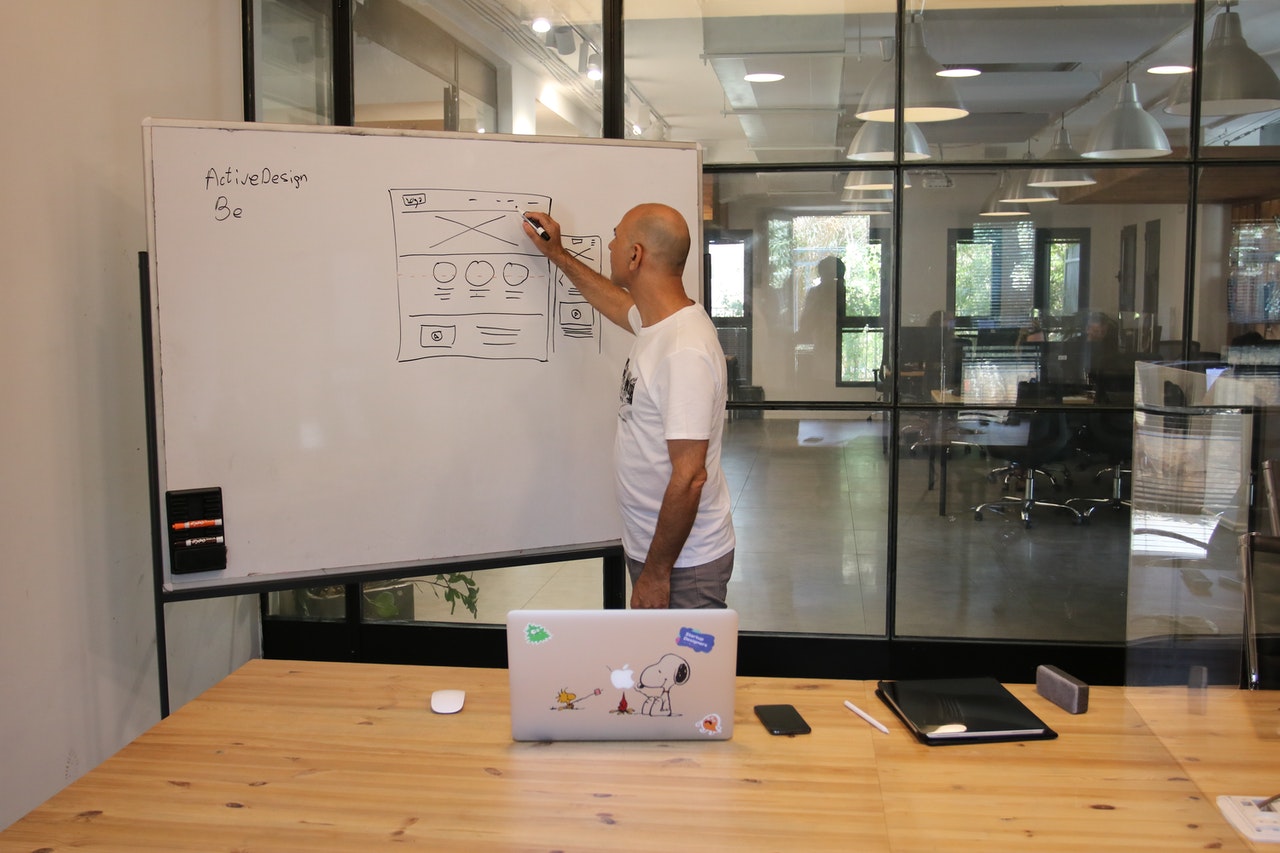A Four-Step Guide to the UI/UX Design Process
One of the stages of digital product development is the user interface (UI) and user experience (UX) design. User interface deals with the visual and interactive elements (icons, images, fonts, screen layout, color schemes, and responsive design) of a website or application. UX is focused on delivering a flawless experience to end-users who utilize your product (website or web application) by improving its functionality and user interaction logic. The UI/UX design process is very collaborative because designers should cooperate to create a product that looks great and functions perfectly.
As we know, designing can be a daunting task, but if you follow the right steps, you will get an enjoyable experience. Below, we briefly review the main stages of UI/UX design.
- Research
At this stage, you should understand who your target audience is and what their needs are. This research can be carried out in various forms, the most common are problem space analysis, potential customer interviews, and competitor investigation. UI and UX developers should be involved in the process from the very beginning, so that specialists can understand the potential users’ demands, brainstorm ideas, make suggestions, and find possible ways to overcome roadblocks.
- Analysis
The main goal of UI and UX designers is to understand users’ preferences and develop a product that will cater to their needs. Therefore, it is necessary to analyze user behavior and create a user map to get an idea of the entire path of their interaction with the product, both during the first and continuous use. All possible interaction scenarios and potential bottlenecks are analyzed. It is important to carefully understand the sequence of user actions:
- Product search.
- Algorithms of clicks and transitions.
- Product experience.
You should adhere to the following rules to successfully implement the user interface.
- All system elements must be clearly structured.
- The interface should not be overloaded with unnecessary content and illustrations.
- All interface components should look attractive and be aligned.
- The text should be coherent.
- Design
During this phase, a website or application wireframe is created, which helps to adapt all the ideas and requirements of the customer. Wireframes help you visualize your product blueprint and give you an idea of what design is needed, where the content goes, and how elements should be arranged. Often they include monochrome colors and simplified visualization of elements. Therefore, wireframes are page templates and do not represent the final design.
- Testing
At this stage, all possible options for interaction with the program are analyzed to identify existing and potential problems. UI/UX testing is based on these methods:
- Card sorting. This method helps to gather insights about users and their thoughts on categories or groupings. During this process, participants sort site structure sketches in a logical order.
- Five-second test. This is an excellent way to get users’ first impressions of your design. The testing process is simple. Participants are shown an image for five seconds, and then they talk about what they saw.
- The cascade method gives an idea of how easy it is to find certain elements or topics.
- The repeated session method allows you to determine the behavior of users.
- A heat map is a visualization of user actions: clicks, page scrolls, and navigation.
Bottom Line
Though UI and UX designers have various sets of skills, they should work together to achieve the ultimate goal of any project – great interface design that meets users’ expectations and an impeccable user experience.
What Is WooCommerce Product Slider and Why Your Store Needs It
Why Do Product Images Matter So Much in Online Stores? When someone visits an online store the…
0 Comments9 Minutes
How to Streamline Your Customers’ Shopping Experience?
The goal for any online store is to make shopping as smooth as possible. When visitors move…
0 Comments8 Minutes
Strengthening Brand-Customer Relationships Through Gamified Loyalty Programs
Creating lasting connections with customers has become increasingly vital as the marketplace grows…
0 Comments6 Minutes
How to Use SEO and SEA Together in Search Engine Marketing
In digital marketing, search engine marketing (SEM) plays a critical role in improving online…
0 Comments10 Minutes
Content Marketing Growth Hacks: Real Shortcuts to Drive Traffic
Are you still lagging in content marketing? Sticking to these old strategies seems…
0 Comments10 Minutes
How to Build a Strong Local Following Using Social Media Marketing
In the days of likes, shares, and stories, local businesses have a golden opportunity to create…
0 Comments9 Minutes
Why WooCommerce is the Best Choice for Your Online Store?
WooCommerce stands out as a top option for anyone looking to build an online store. This platform…
0 Comments8 Minutes
How to Use AI-Powered SEO Tools for WordPress eCommerce
SEO is a critical factor in the success of any e-commerce WordPress store. As competition…
0 Comments11 Minutes








